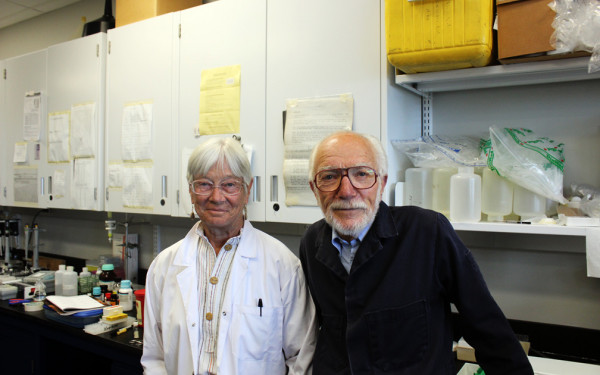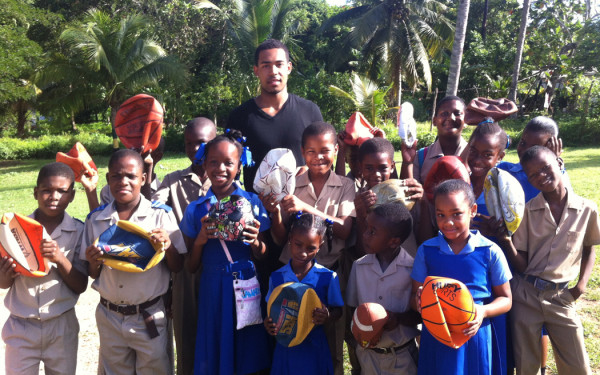Will Big Name Donors Change Concordia’s Journalism School?
In early December, Concordia’s Journalism Department announced Sportsnet’s $650,000 donation in scholarships and awards, the biggest in the program’s history.
Read this story on the 2016 Media and Democracy microsite here.
At a press conference, the media organization said it wanted to invest in future sports journalists. The news raised negative reactions from some journalism students, who had grown frustrated from what they perceived to be a form of favouritism from the department towards sports journalism.
Concordia’s Bachelor of Arts in Journalism is a program that teaches the broad and general aspects of the profession—only offering the option to pursue textual or audio-visual concentrations or a multiplatform program, which combines both. Considering the lack of opportunities to specialize in particular areas of interest, students were right to be frustrated.
Yet, the department cannot turn its back on such a donation when it benefits a fair number of its students. Money helps develop and build a program with better courses and equipment year after year, but the students should also expect transparency from their department in terms of financing and how its provenance affects the content we are taught.
We are not necessarily there yet, but a good way to get a better idea of how money is distributed is to look at the awards, scholarships and bursaries offered by the Journalism Department. For the purpose of the article, I’m comparing Concordia to Carleton University, Ryerson University and the University of Regina.
For the current year—excluding the new Sportsnet bursaries, which total $25,300 for undergraduate students this year—Concordia’s Journalism Department offered about 25 scholarships. Of these, eight were sports-focused. Only one other bursary centred on a specialized type of reporting: explanatory journalism. The awards are highly sought after, as the department enrolls 70 students per year.
The University of Regina only welcomes 25 students in its School of Journalism per year—less than a third of what Concordia does—but offers around 30 scholarships. There is diversity in awards for specialized reporting, such as environmental and community journalisms, yet the department also has a notable donor: CTV News. The media outlet offers four awards, but in comparison to what Sportsnet does with Concordia—rewarding students who follow the sports journalism path—CTV News invests in students who excel on various levels, such as being outstanding writers or expressing interest in investigative journalism.
Carleton University welcomes about 230 students in its first year, before making a big cut of about 100 in the second year of the program. Considering the volume of its student body and alumni, it is understandable that its Journalism Department offers much more bursaries: 39. The awards emphasis diverse interests, from politics and business to human rights and photojournalism. However, the amount of awards for broadcast journalism is twice that of the textual-related scholarships. Another important thing: Carleton is noted for being more oriented towards politics and Canadian affairs in its teaching of journalism, because the university is in Ottawa. If journalism programs are designed around interests specific to the city they’re based in, it’s fair to ask whether a program based in Montreal should be focused on sports, or something else?
Finally, Ryerson University, with about 120 students per year, offers the most bursaries, with over 45. It also has a fair share of diversity in specialized journalism; however, business reporting seems to take the lead, with four awards related to it. It’s also notable that a total of 16 awards are related to print journalism, with only four related to broadcast journalism. While at Concordia, students long for more attention for specialized journalism, at Ryerson, it seems to be the audio-visual medium that has the short end of the stick. However, the school does offer specialized journalism courses throughout the program.
All journalism schools are different, but looking at both their curriculums and the awards they offer may help students have a better understanding of their programs and express their opinions and concerns to the department in order to build a better program and a better relationship between staff and students. Journalism schools, Concordia included, should acknowledge the diversity of interests of their students. The aim should be to develop those with specialized classes or with awards that cater to them. This will encourage them to produce quality work and pursue their chosen path after university.
Special thanks to Arian Zarrinkoub for her precious advice. Louis Angot is an undergraduate journalism student at Concordia.


_600_832_s.png)

1_600_375_90_s_c1.jpg)

